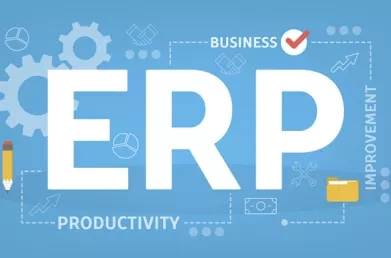4 Essential Tips to successfully manage change in your multi-site ERP implementation
Implementing ERP systems is challenging, even more so when the solution is rolled out to multiple sites.
Whether your multi-site ERP deployment is delivered as a ‘big bang’ (all sites at once) or phased on a site-by-site or function-by-function basis, multiple locations will increase the project duration and the complexity of the project delivery. Good change management practices can help with the increased level of business change inherent to multi-site deployments and ensure a successful outcome. Here are some tips based on our experience of managing change on complex projects.

TIP 1: Take a hybrid approach to process design
The objectives for many ERP implementations will include standardising business processes across sites, but is it realistic to expect all sites to operate in the same way? At Lumenia, we recommend a hybrid approach that identifies core processes for standardisation but also allows flexibility for local adaptation while maintaining overarching business objectives. The ERP solution being implemented must provide scalability and adaptability for site-specific requirements. Using 'to-be’ process mapping to ensure that site-specific requirements have been considered will improve user adoption. My colleague, Jim Goodison, discusses the usefulness of “to-be” process maps in more detail in his article Do we need “to-be” process maps during our ERP implementation?
TIP 2: Manage effective communication and collaboration
The change management effort needs to account for cultural differences, communication barriers, and varying levels of technology adoption. Recognising this and involving all sites in the decision-making process early on is the first step in addressing concerns. Effective communication and collaboration across the business is critical and this is underpinned by a structured and rigorous approach to stakeholder engagement and project communication.
TIP 3: Harness lessons learned
The advantage to multiple site ‘Go-Lives’, is the skills and knowledge gained by the project team that can be applied to future site deployments. To maximize the benefits of the learning curve, it is important to engage with all stakeholders to document lessons learned from each site deployment and share them across the business to foster a culture of continuous improvement.
TIP 4: Watch out for project fatigue
Project fatigue is a common problem due to the project’s complexity, duration, and intensity. People are central to a successful implementation, so it is important to keep the project team motivated, address their concerns, and ensure adequate resources are assigned to each site rollout.
In summary, to combat the complexities inherent to a multi-site ERP deployment, additional factors such as the scalability and adaptability of business processes, positive user engagement to encourage user adoption, vigilant management of resources, and effective cross-site communication need to be managed carefully. An experienced ERP Change Manager will have the knowledge and skills to address these factors and to support the organisation as it navigates the complexities of multi-site ERP deployments, increasing the likelihood of a successful ERP deployment across all locations.
This blog was written by Principal Consultant, Gráinne O’Driscoll at Lumenia. For further information please send an email to Gráinne.


